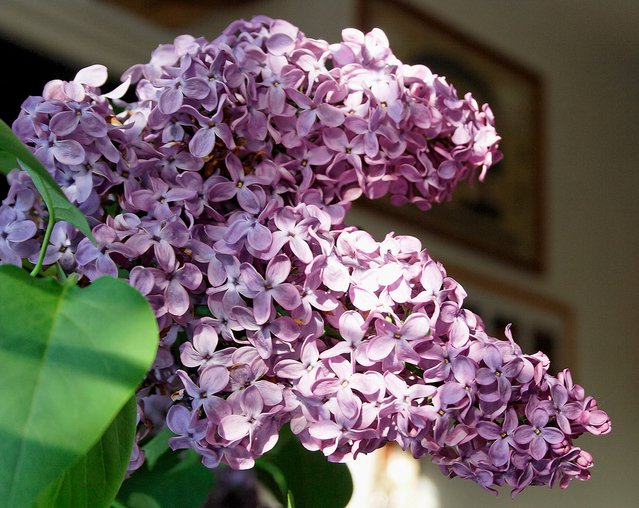As serendipity would have it, I smelled my first lilacs when I was nine and had just finished reading the Nancy Drew book, The Mystery at Lilac Inn. Though I enjoyed the book’s plot, as a budding green thumb, I remember being more intrigued by the lilacs. What did they smell like, I wondered, and were they as beautiful as they looked?
To my delight, lilacs lived up to their reputation. The gorgeous lavender clusters of blooms emitted the most charming fragrance I’d ever encountered. Now is the time to plant this heavenly flowering shrub, which blooms spring through early summer. To have luck growing lilac, keep the following cultivation tips in mind.
Choose the growing location carefully. Lilacs grow best in full sun. They can tolerate some shade later in the day. Ensure sufficient space for growth by checking out the mature height and spread of the species you are planting. Some lilac bushes will eventually reach 25 feet high. Lilacs prefer soil that is slightly acidic to slightly alkaline.
Provide excellent drainage. Lilacs don’t do well with wet feet. Plant in a location that drains well. Test the area by digging a 12-inch-deep hole and filling it with water. If the water doesn’t drain within an hour, find another planting site, or amend with compost and pumice to improve the drainage. Once you’ve finished amending, retest the drainage.

(Claudia Meyer/FreeImages.com)
Plant. Place the lilac bush in a hole that is as deep and wide as the plant’s root system. If the plant is in a container, place it at the same level as it was in the pot. When planting bareroot lilacs, place the top layer of roots two to three inches below the surface of the soil.
Water regularly. Lilacs prefer to be kept moist but not soggy. Water when the top one to two inches of soil has dried out. Avoid wetting foliage when watering, as lilacs are prone to mildew.

(Anthony Foshay/FreeImages.com)
Feed monthly. Lilacs require fertilizing during the growing season. Start feeding monthly in early spring and continue until June. Use a well-balanced, organic fertilizer designed for flowering plants.
Deadhead. Cutting off spent blooms will cause repeat-blooming varieties to produce more flowers. With types that don’t repeat bloom, cutting off finished flower buds makes the plant look nicer overall.
 (Mira Pavlakovic/FreeImages.com)
(Mira Pavlakovic/FreeImages.com)
Cut flowers to enjoy. Perfume the indoors by cutting flowers in the early morning before the sun becomes harsh. Crush the bottom of the stems and put the flowers in a vase of warm water.
Prune. Trim back your lilac bush right after flowering. Avoid pruning any later than July, or you will most likely remove flower buds meant for the following spring. When pruning, trim out spent flower buds and thin old wood and crossing branches. If the plant is young, prune lightly just to shape. For older plants that have gotten larger than you like, prune back by no more than one-third, removing the oldest branches.
Julie Bawden-Davis is a garden writer and master gardener, who since 1985 has written for publications such as Organic Gardening, The American Gardener, Wildflower, Better Homes and Gardens and The Los Angeles Times. She is the author of seven books, including Reader’s Digest Flower Gardening, Fairy Gardening, The Strawberry Story Series, and Indoor Gardening the Organic Way, and is the founder of HealthyHouseplants.com.

